An island inhabited by Croats in the 7th century. An island that successfully defended against pirates seven times. An island whose last prince was the seventh prince Frankopan. And it's still inevitably connected to this number today, as Krk currently has seven centers - Omišalj, Malinska, Dobrinj, Vrbnik, Krk, Punat, and Baška. But what else makes Croatia’s largest island so special?
Krk, recognized as the ‘Golden Island’ since ancient times, is located in the center of Kvarner Bay in the northern Adriatic, in a geographically favorable position. Decorating its 190-kilometer-long coastline are the neighboring islands of Cres, Goli, and Rab and smaller islets like Plavnik and Školjić. Applauded for its mild Mediterranean climate that displays ideal summer air temperatures and short and mild winters, and, of course, its unparalleled natural beauty, Krk is also considered the cradle of Croatian culture.
History
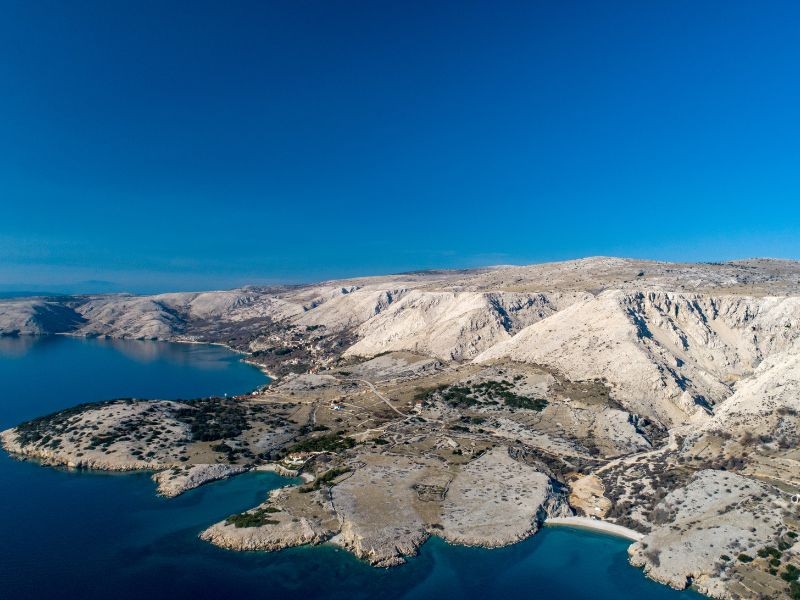
The first settlers on the island of Krk were the Illyrians, followed by the Greeks and the Romans, whose traces can be uncovered in ruins left on the island today. At the end of the 5th century, Croats made their way to the island, dispersing on the land in clans within castles. The most important of which emerged was the Frankopan family in the 12th century.
Likened to be as powerful as better-known European emperors, the Frankopans' rule extended far beyond the island of Krk. At the height of their rule, this family-owned the equivalent of half of today’s Croatia. The Frankopans maintained peace on the island, arranged legal relations, cherished the Croatian language and the Glagolitic script, and maintained sacral objects necessary for liturgical purposes.
In 1480, Krk became the last island in the Adriatic to fall under Venetian rule, which resulted in the decline of the Frankopan empire. Much like the rest of Croatia, Krk was later ruled by the French, Austro-Hungarians, Italians, and Germans and was part of Yugoslavia until Croatian independence.
Today, Krk is the most populous island in the Adriatic, which developed thanks to tourism after World War II. Most important for the development of tourism on the island is Krk’s famous bridge, which connects it to the mainland.
Marinas
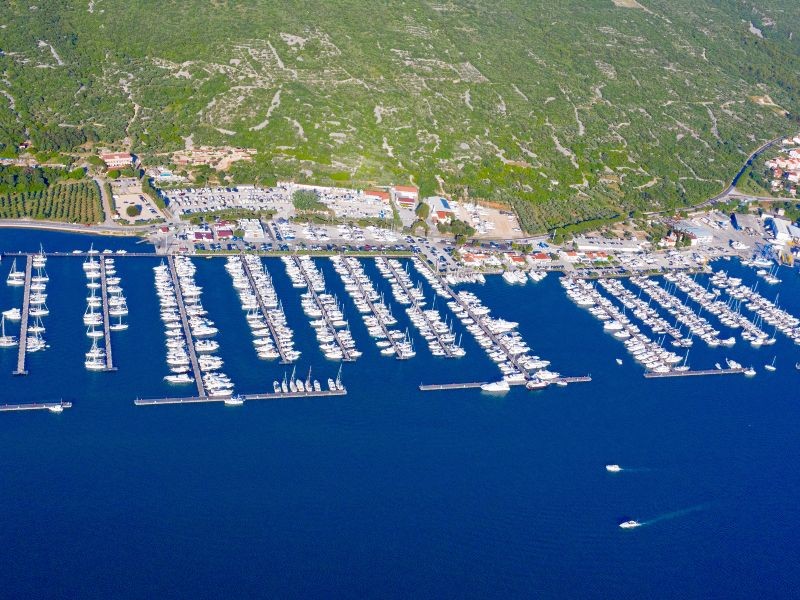
The most frequented marina on the island is undoubtedly Marina Punat, located on its southwestern coast as the perfect starting point for Kvarner Bay and Kornati sailing trips. A haven for boaters, this marina sits in a well-protected bay with 800 berths for yachts up to 45 meters. But that’s not the only reason this marina is hailed as the #1 nautical destination.
While Marina Punat may be one of Croatia’s oldest marinas, it’s also often awarded for its quality. And its amenities are part of its perks. While you can find a market at the marina, the center of Punat is also within walking distance, where you can have your pick of bakeries, butchers, and green markets selling fresh produce. While the marina has a few restaurants, this waterfront town has many eateries and cafes.
Restaurants
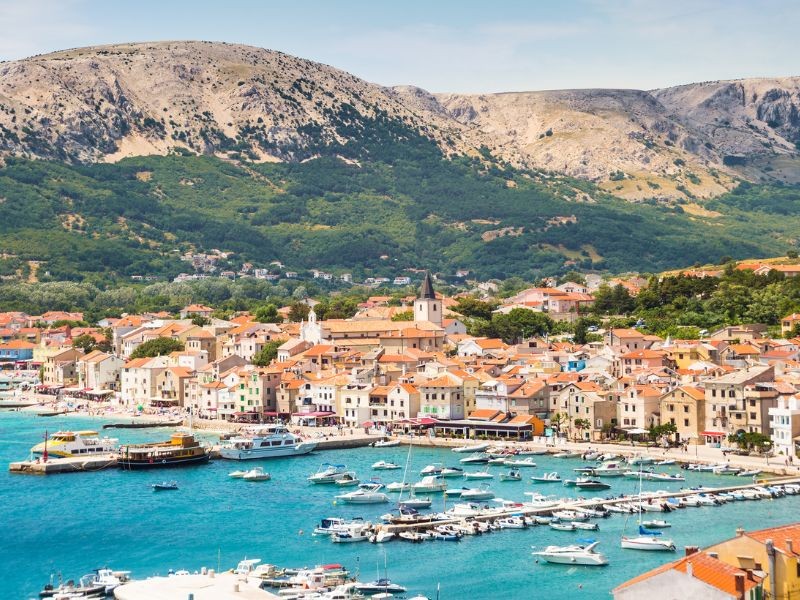
And while we’re already on the topic of food, we can’t forget about Krk’s culinary charm, specifically its most-valued asset - lamb. Krk lamb is allegedly so famous that Roman emperors featured the special ingredient at their banquets!
So, where to eat some? Casa del Padrone is one of the island’s most famous restaurants, located in the heart of the Krk town waterfront. With sea views and untraditional interior and exterior design, this restaurant promises to offer the highest quality Mediterranean food, impressive homemade cakes and desserts, and tasty cocktails. The lamb Sirloin baked in a wood-fired oven is one of the fan favorites.
Restaurant Nada in the town of Vrbnik is a showstopper thanks to its terrace overlooking the sea, but the food also gives you something to write about. In addition to tasty lamb dishes and traditional šurlice pasta, goulash, and other domestic seafood specialties, you can also sip its house white wine in the bar area.
Just outside Krk in the picturesque town of Milohnići is yet another impressive rustic building with huge terraces under the trees. Konoba Pud Brest’s story began in 2011 when one family restored an abandoned old house as a haven of non-pretentious homemade cuisine with homegrown ingredients. Local pasta dishes, goulash, and brudet are the most popular on their menu, but considering their proximity to the sea, you can also count on many fish specialties.
And finally, you can’t miss the House of Krk Prosciutto in the town of Vrh, where you can witness the live production, methods, and specifics of Krk prosciutto, sample the salty products, and enjoy a meal at their casual tavern!
Beaches
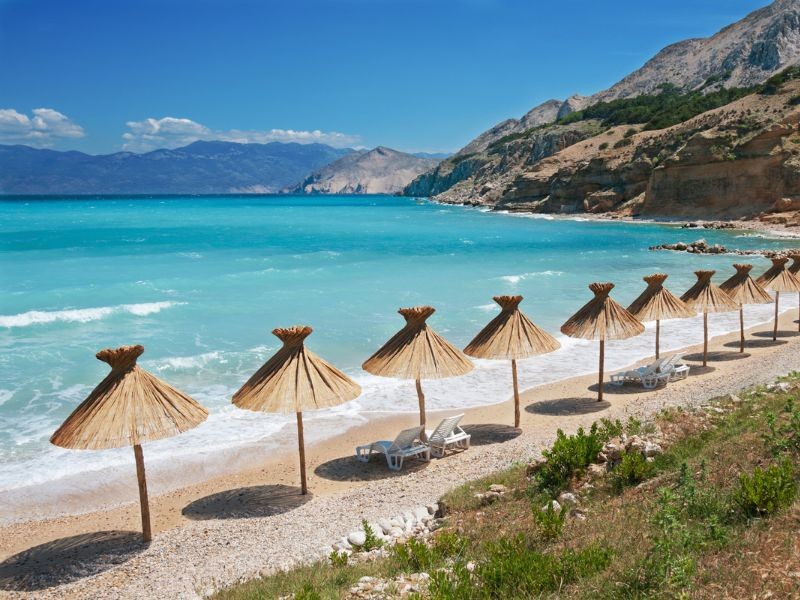
An island this breathtaking doesn’t lack swimming spots, and with a coastline that reaches some 200 kilometers, you can expect over 100 beaches on Krk.
The most famous beach on Krk is Vela Plaza in Baška, stretching two kilometers down the coast. You’ve likely seen photos of this beach plastered on the pages of Croatia’s magazines, and it’s no surprise. But this beach is more than its beauty - it has also proudly held the Blue Flag since 1999! The Baška area also hides a less famous off-the-beaten-path gem - Vela Luka - a natural bay that spans 1.8 kilometers long and 400 meters wide.
Heading to the southern coast of Krk is Oprna Bay, a local secret close to Stara Baška. Sheep pastures surround this rustic and rugged natural beach to enhance your swimming experience. And if you’re looking for sand? Head to Sveti Marak in Risika, not far from the town of Vrbnik, where natural sand and shallow waters make it the perfect spot for families with children.
What to do?
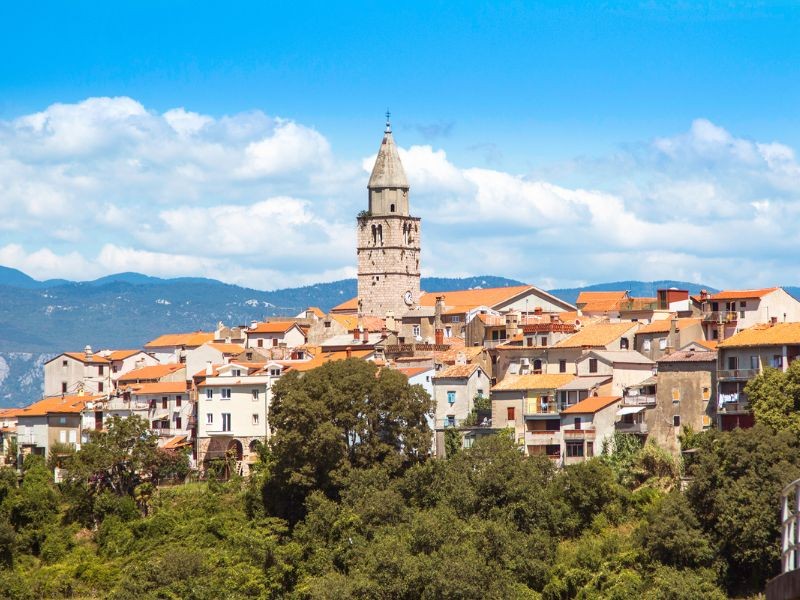
The outdoors are certainly king on Krk, considering its unique Mediterranean vegetation. You can find everything from karst to mountain landscapes, streams, lakes, coves and caves, forests, and fertile fields. And because of this, Krk has thriving flora, or 1,400 terrestrial plant species, which make up nearly half of the total flora in Croatia. One of the species is even a rarity in the world!
One terrific outdoor activity is hiking to Krk’s highest point Obzova (570 meters). The hike rewards with views of the island, Kvarner Bay, and surrounding islands Rab, Cres, and Lošinj. You can even see Mount Velebit on the mainland.
And if you’re looking for super cool natural attractions? Head to Biserujka cave near the village of Rudine. The Great Hall of the cave is 13 meters below the point of entry, decorated with calcareous sinters, stalagmites, and stalactites. This cave is also connected by an educational trail to Slivanjska Cove, making for a longer underground exploration.
While we’d like to argue that all towns on Krk should be visited, it would be a shame to miss a few, like Vrbnik. Perched atop a limestone cliff, Vrbnik holds more than Glagolitic manuscripts in its Parish Church. In addition, it cultivates its very own Žlahtina white wine, which is native to the Vrbnik fields!
The town of Baška also has its share of history, as it is where the Baška Tablet, the most famous monument of early Croatian literacy, was found. In the nearby town of Jurandvor, you can visit the Church of St Lucy, where the Baška Tablet was found in 1851, featuring the earliest mention of ‘Croatia’ and ‘Croatian’ in Glagolitic script. In the town of Baška, don’t miss the Glagolitic Alphabet Trail, with 34 stone sculptures placed on important sites in Baška Valley representing this historic moment.
And then there is Krk town, known for its Frankopan history, especially its 12th-century fortified square Kamplin. Bordered by the cathedral on the west side and the Frankopan castle on the south side, today, this square is more than pretty to look at - it holds outdoor concerts and theater performances in the summer months.
Kids will love the Baška Aquarium, where 21 tanks house Adriatic creatures from grouper fish and seahorses to 400 types of snails and mussels, while divers can discover shipwrecks dating back to Napoleonic times at Dunat Beach.
And if you’re looking to heal your arthritis? Don’t miss a dip into the medicinal mud at Soline Bay, located in the northeastern part of the island. It's an excellent activity to ensure glowing skin for the rest of your sailing trip.
Now, all that’s left to do is book a yacht, relax and enjoy. Contact us and let’s talk about creating your perfect sailing holiday!
